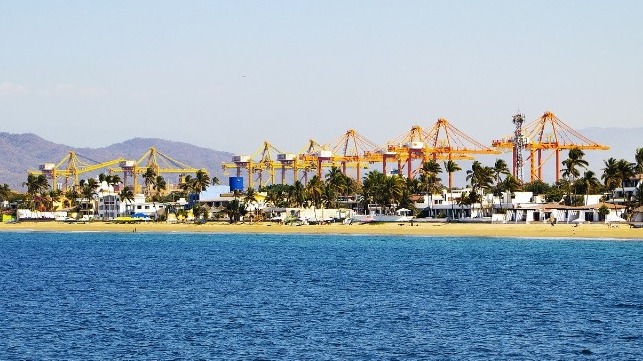Study Shows Huge Potential for Mexico's Clean Shipping Market

A new study shows that Mexico would be wise to prioritize the adoption of zero carbon shipping fuels, a development that has the potential to attract about $9 billion in investments over the next decade.
The study - titled Mexico: Fuelling the Future of Shipping - finds that the country is endowed with abundant renewable energy potentials and access to busy shipping routes, making it perfectly placed to build a valuable zero carbon shipping fuels sector.
This includes production of zero carbon fuels from renewable electricity, green and blue hydrogen, green and blue ammonia, green methanol, biofuels and battery power for supplying vessels that visit Mexican ports, with potential to export the fuels on the global market.
The study - conducted by Ricardo and Environmental Defense Fund on behalf of the Getting to Zero Coalition - contends that effective regulation could make such fuels commercially viable within the decade.
“The shift towards zero carbon shipping needs to accelerate within the next decade and effective regulation will also create opportunities for countries to catalyze and benefit from this necessary transition. By moving early, Mexico can become a central actor in supplying the global demand for green fuel and attract investment of $7-$9 billion by 2030,” said Panos Spiliotis, Environmental Defense Fund’s global climate shipping manager.
As the second largest economy in Latin America and 15th largest in the world, Mexico has established itself as a major trading hub between North and South America. It has capitalized on its Pacific and Atlantic coast ports, giving access to markets in Asia, Europe and Africa.
Its strategic position has enabled the country to build a vibrant maritime industry, with cargo volume standing at 6.4 million twenty-foot equivalent units (TEUs) last year, down nine percent from 7.1 million TEUs in 2019. Performance has been on a recovery trajectory during the first four months of 2021, when the country’s ports handled 2.3 million TEUs - a 12 percent increase compared to 2.1 million TEUs in the same period last year.
According to the study, production of green hydrogen-derived shipping fuels could help Mexico meet its targets by catalyzing renewable energy supply chains, skills, and economies of scale. It identifies hydrogen and ammonia as the most suitable options for large commercial vessels such as tankers, containers and bulk carriers, while small vessels such as port service vessels can be supplied through electrification.
The report highlights the Ports of Manzanillo, Cozumel and Coatzacoalcos as great examples of how different types of ports in Mexico could capitalize on a zero carbon transition. Apart from meeting decarbonization targets, the transition would diversify current port activities and create a hub for the production and export of zero carbon fuels.
Mexico has historically depended on fossil fuels as primary sources of energy. Natural gas accounted for nearly 40 percent of the national energy supply mix in 2019, while solar PV and wind combined contributed only three percent.
